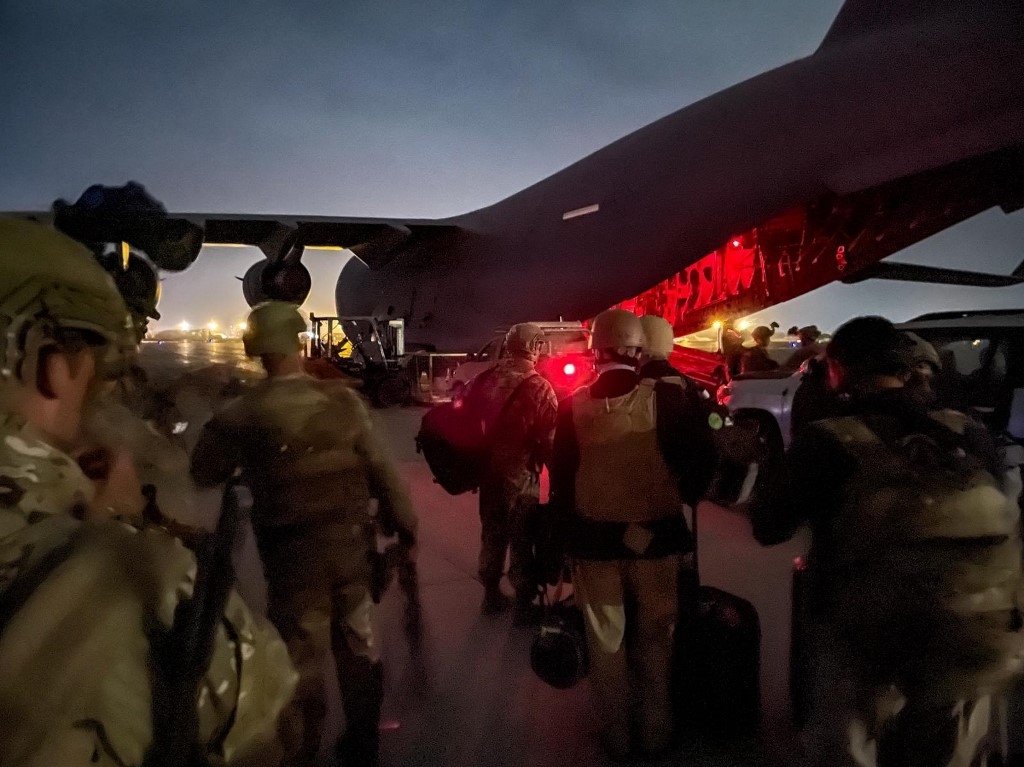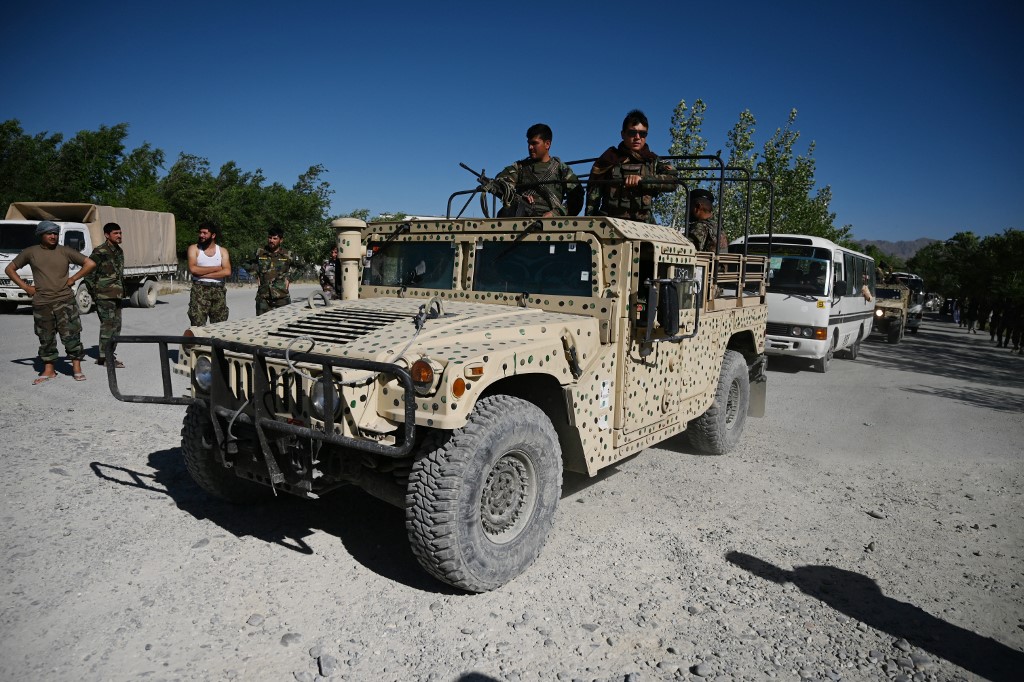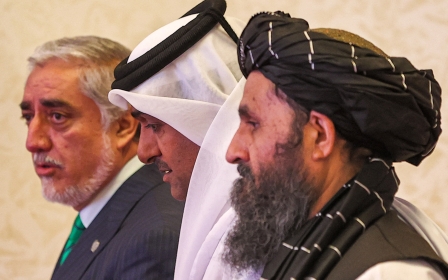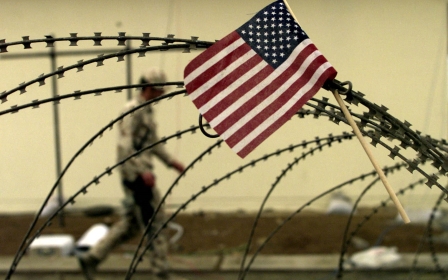I witnessed US war crimes in Afghanistan - for all its victims justice is due

In the summer of 2001, I moved with my family to Afghanistan from the UK to work on a project to build wells in drought-stricken regions of the country, and to help set up a girls’ school in Kabul.
The Taliban, who were in charge of the country, had banned television, but a friend of mine heard on the radio that the US had been attacked. I understood what the Pentagon was, but I had never heard about the Twin Towers. Initially, I thought the US had been invaded by China, or even Cuba. But the finger was soon being pointed at Osama bin Laden, who was also in Afghanistan.
It was clear to me that the Americans had no idea what they were doing, or what the consequences of their abuses would be
Before the bombing began, I saw planes dropping leaflets from the skies, offering bounty money for al-Qaeda and Taliban suspects. It was a strange spectacle, and although I’d never been there, the description given by then-defence secretary Donald Rumsfeld - “dropping like snowflakes in December in Chicago” - seemed apt.
At first, US warplanes bombed under cover of darkness, and I could see Taliban anti-aircraft guns fire ineffectually into the sky. Shortly afterwards, however, the air raids occurred during the day. I had heard explosions during my visits to Bosnia in the 1990s, but I had never heard any explosions like this. I learned later that the US Air Force used 15,000lb “Daisy Cutter” bombs.
I evacuated to Pakistan and remained there until early 2002, when I was abducted from my home by CIA and Pakistani intelligence agents at gunpoint in front of my wife and children. Bad intelligence from the UK, alongside the snowflake leaflets, had secured my fate.
Horrific abuses
I was taken back to US detention facilities in Kandahar and Bagram, where I remained for almost a year before being sent to Guantanamo. Several of those held with me were Taliban members, including senior ones - but they were not the only ones.
I witnessed horrific abuses in Bagram and saw two Afghan prisoners beaten to death by US soldiers. One was an innocent taxi driver called Dilawar.
In Bagram, I met Afghans who had even fought against the Taliban, but had been sold for bounties amid tribal feuds. It was clear to me that the Americans had no idea what they were doing, or what the consequences of their abuses would be.
A young Afghan prisoner told me that his father had been buried alive by Soviet occupation forces at Bagram. In fact, the Soviets had originally built the place used by the US military to imprison us. I’ll never forget when the young Afghan told US interrogators: “The USSR killed my father right in this place; do you think his son will submit to the USA?”
US soldiers I spoke to then seemed proud that they’d captured Afghanistan in so little time. But they hadn’t read the history of this land. No one likes invaders, but Afghans have a history of defeating them - especially when they are the world’s most powerful forces.
And torturing people and desecrating their faith - well, that literally seals the fate of both the resistance and the occupation.
Unwinnable war
The years of drawn-out conflict in Afghanistan proved that the US coalition could not win. The Taliban were in their own homes while the Americans were faraway, wishing they were home.
Those sent to Guantanamo had to undergo torture and humiliation under the command of General Geoffrey Miller. He used government-approved “enhanced interrogation techniques” to maximum effect. Miller went on to lead detainee operations in Iraq, notably in Abu Ghraib, where infamous abuses occurred, and Camp Bucca.
Miller’s aim to “Gitmo-ise” Iraqi prisons had devastating effects. Al-Qaeda, which moved into Iraq as a result of the US invasion, formed the Islamic State of Iraq (ISI) in Camp Bucca, alongside former Baath party members close to Saddam Hussein. ISI eventually became the Islamic State (IS); an estimated 17 top IS leaders had been held captive in US-run prisons.
Al-Qaeda attacked the US on September 11, 2001, for many reasons. One view is that it sought to deal such a blow that the US would not recover. Yet, not only did the US recover, it put everything it had into trying to destroy al-Qaeda and anyone connected to it - real or perceived.
That’s where another theory comes in: 9/11 happened so that the US would be drawn into a war it could not win. In that regard, it seems Bin Laden got his way.
The Taliban celebrated the departure of US troops as a clear victory, and they weren’t alone. British military leaders, who had commanded tens of thousands of troops in Afghanistan, were conceding Taliban victory and describing them as people with a “code of honour” who seek an “inclusive government”.
Irreversible damage
As former victims of Guantanamo and torture take leading positions in the new Afghan government, it’s hard to conclude that the US’s standing in the world hasn’t been irreversibly damaged. The chaos at Kabul airport will never be forgotten, having already overshadowed scenes of Saigon as the US withdrew from Vietnam.
While haunting images of the “falling man” will forever be linked to the 9/11 attacks, images of three Afghans falling from US military aircraft at the Kabul airport will be engraved in our collective memory of the US’s end in Afghanistan.
But that’s not all: even as the chaotic evacuation proceeded, more than 160 Afghans and 13 US soldiers were killed in an airport attack carried out by IS-Khorasan. At some point, US leaders must come to terms with the fact that 28 Taliban soldiers died while guarding the US perimeter and the civilians and soldiers within it - and so must the Taliban.
The Times describes Bagram as 'the scene of some of the darkest episodes of the US-led occupation'. But to me, it's the scene of countless unresolved war crimes, and I'm an eyewitness
It took two decades, thousands of deaths, trillions of dollars and the destruction of the US’s reputation to conclude that negotiations were possible. But there must also be a reckoning.
As Kabul fell to the Taliban, so did Bagram prison. As a former prisoner of this place, it’s hard to describe the emotions I felt at hearing this news. The Times describes Bagram as “the scene of some of the darkest episodes of the US-led occupation”. But to me, it’s the scene of countless unresolved war crimes, and I’m an eyewitness. It is regarding those crimes that I gave testimony to the International Criminal Court, and for which the US government threatened to prosecute its members.
To mark the 20th anniversary of the war on terror, my organisation, CAGE, is launching the International Witness Campaign (IWC) alongside 40 international organisations that bring together former prisoners, former soldiers, academics and campaigners to discuss, document and divulge to the public our collective analyses and experiences of this historic moment.
The US’s literal parting shot to Afghanistan was a drone strike in retaliation for the airport attack. It killed 10 members of one family, including seven children. The IWC will assess the impacts of war on millions of people. It’s not something I’m looking forward to, but if our governments fail to learn lessons, the rest of us are left with the task of reminding them.
The views expressed in this article belong to the author and do not necessarily reflect the editorial policy of Middle East Eye.
Middle East Eye propose une couverture et une analyse indépendantes et incomparables du Moyen-Orient, de l’Afrique du Nord et d’autres régions du monde. Pour en savoir plus sur la reprise de ce contenu et les frais qui s’appliquent, veuillez remplir ce formulaire [en anglais]. Pour en savoir plus sur MEE, cliquez ici [en anglais].







